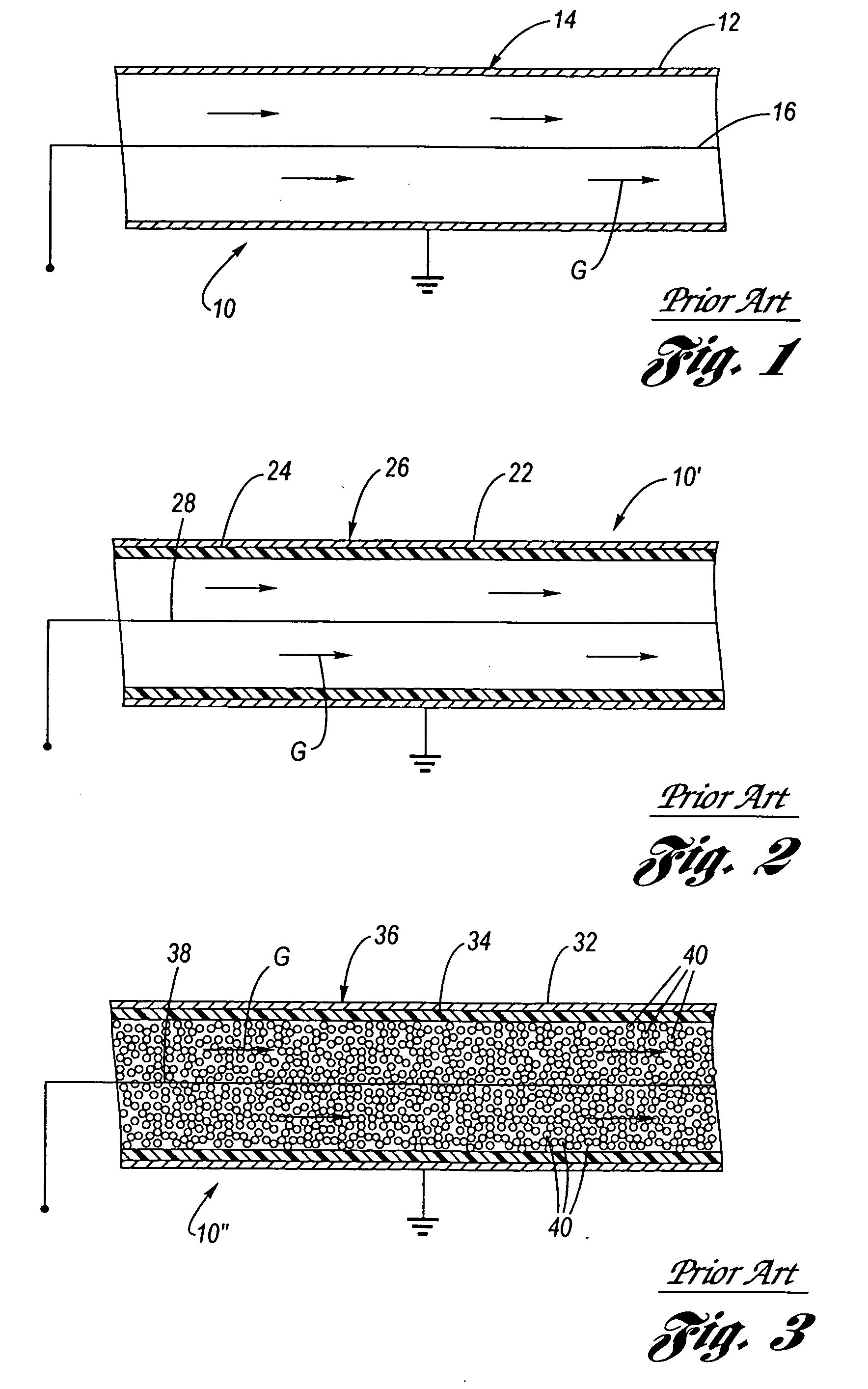Method of reducing NOx in diesel engine exhaust
a technology of diesel engine exhaust and nox reduction, which is applied in the direction of machines/engines, mechanical equipment, separation processes, etc., can solve the problems of prohibitively large power requirements for plasma reactors, increase in input energy above a certain value, and hardly improve the overall performance of plasma processes, etc., to promote axial mixing of ionized reaction intermediates, the effect of reducing the energy consumption in relation to the production of aldehydes is extremely favorabl
- Summary
- Abstract
- Description
- Claims
- Application Information
AI Technical Summary
Benefits of technology
Problems solved by technology
Method used
Image
Examples
Embodiment Construction
[0027] Referring now to the Drawing, FIGS. 5 through 16 depict various aspects of an example of an automotive exhaust gas hyper-plasma reactor and catalytic converter system 1000 according to the present invention, wherein a hyper-plasma reactor 100 thereof features serially alternating regions of active and passive electric field along its axial length, and wherein the hyper-plasma reactor is located in a sidestream relationship with respect to the main exhaust stream, as shown at FIG. 5.
[0028] As depicted at FIGS. 6 through 9, the hyper-plasma reactor 100 according to the present invention has an elongated cylindrical configuration defined by a plasma reactor wall 102 composed of an insular dielectric material 102′ which serves as a dielectric barrier and defines a reactor space thereinside. The composition of the plasma reactor wall 102 may be any suitable dielectric material, as for example quartz, glass, alumina, etc. By way merely of exemplification and not limitation, the di...
PUM
| Property | Measurement | Unit |
|---|---|---|
| exhaust flow rate | aaaaa | aaaaa |
| thickness | aaaaa | aaaaa |
| energy density | aaaaa | aaaaa |
Abstract
Description
Claims
Application Information
 Login to View More
Login to View More - R&D
- Intellectual Property
- Life Sciences
- Materials
- Tech Scout
- Unparalleled Data Quality
- Higher Quality Content
- 60% Fewer Hallucinations
Browse by: Latest US Patents, China's latest patents, Technical Efficacy Thesaurus, Application Domain, Technology Topic, Popular Technical Reports.
© 2025 PatSnap. All rights reserved.Legal|Privacy policy|Modern Slavery Act Transparency Statement|Sitemap|About US| Contact US: help@patsnap.com



